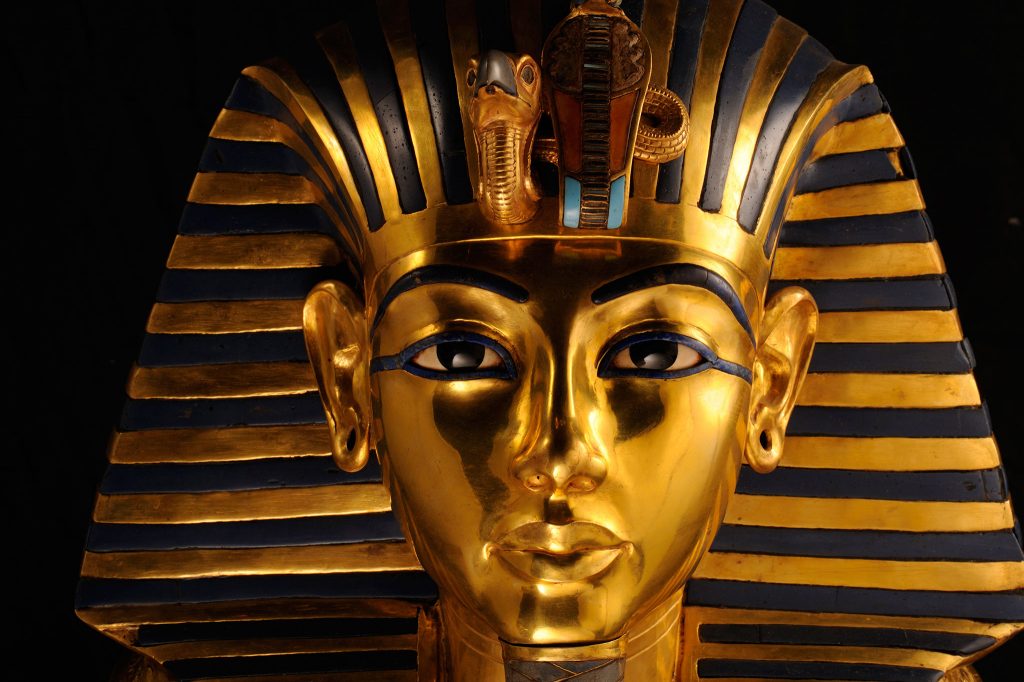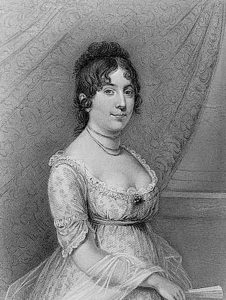Thanks to modern technology, the examination and research into mummified bodies and artifacts from ancient Egypt have answered many questions for scientists and historians alike. What was the culture of these ancient people? Who were their leaders? And what was the process and purpose of mummification? In the twentieth century, the tomb of King Tutankhamen was discovered, and that discovery has answered many of these questions. Thanks to the discoveries of the Ancient Egyptian’s burials of their kings, particularly that of King Tutankhamen, we have learned more and more about the Ancient Egyptian’s history and traditions when it comes to laying the dead to rest.

Scientists and archaeologists say that King Tutankhamen became king at the very young age of nine. However, he may have been no more than a puppet ruler, and the true power behind the throne was said to belong to a man who may have been related to Tut named Ay. Young Tut was a physically frail youth. Through the examination of his body, scientists have found malformations in his feet, and they suspect that the young man had walked with a cane.1 Though he was depicted as fighting in battles and slaying enemies in drawings on the walls of his tomb, there is no actual evidence that this young man participated in any actual battles. However, scholars believe that these depictions merely represent an extension of Tut’s power. It was believed that he married his half-sister, Anthesenpaaton, who was also very young. Though the two had not produced any known heirs, the bodies of two babies were found buried in Tut’s tomb. Archaeologists believe these babies may have been the children of young Tut and his queen.2 He reigned during a period of time known as the New Kingdom. At the young age of eighteen, Tut’s short life and reign over Ancient Egypt had come to an end. The exact cause of Tut’s death remains a mystery; however, scientists believe it may be connected with an infection spread by a broken leg.3
In 1922, the tomb of King Tut was discovered. This finding helped give archaeologists an understanding of the wealth of Egyptian civilization, especially for those living in the upper class. The value of the gold and treasure found in King Tut’s tomb, as was the case for treasures found in other areas of ancient Egypt, surpass that of many others discovered from ancient times. It also has given scientists and researchers much insight into the history, tradition, and science behind the process and purpose of mummification.4
Scholars have discovered that mummifying bodies was tied to the ancient Egyptians’ belief about the afterlife. Egyptians believed that the body was not just a corpse after death, but a resting place for the soul. Osiris, the god of the resurrection and a very respected god to the Egyptians, would judge the soul of the dead.5 Because the Egyptians believed the soul would move on, King Tut’s final resting place was filled with tools and items that the King might need in the afterlife. It contained artifacts such as clothing, musical instruments, jewelry, lamps, chairs, and baskets with food and wine. In addition to the tomb itself, much has been discovered from bodies that were laid to rest so many years ago, including the body of King Tut. The success of the preservation can be accredited to the detail that the ancient Egyptians provided during the process of mummification. Through many years of research and observation, scientists and archaeologists have found that this important practice evolved over time, but it has followed the same basic instructions and procedures.6 After his death, all of Tut’s organs were removed from the body, except the heart, and placed into containers called Canopic Jars. Afterwards, Tut’s body was then covered in a mixture called natron, which consisted of salts that helped inhibit bacterial activity and dehydrate the body. After a little over a month, the mixture of salts was removed from Tut’s body and his cavities were filled with cloth containing resin to give the corpse its shape back. Only after this was the body wrapped with linen, giving it the classic “mummy” appearance. Tut was then placed in a solid gold coffin, and the coffin was then placed in his tomb.7
Traditionally, it was only emperors, kings, and members of the upper class who were mummified, but as time progressed it became a tradition for many members of this ancient society.8
However, because Tut was a king, his resting place was filled with ancient artifacts and treasures in addition to his mummified corpse. Although his reign, and his life, were cut very short, the ancient Egyptians left more than a final resting place for the boy King’s soul when they laid him to rest: they left us, the people of the 21st century, with answers.
- Phillip A. Mackowiak, Diagnosing Giants:Solving the Medical Mysteries of Thirteen Patients Who Changed the World (Oxford: Oxford University Press, 2013), 3. ↵
- Salem Press Biographical Encyclopedia, January 2015, s.v. “Tutankhamen,” by Donald C. Simmons. ↵
- Salem Press Biographical Encyclopedia, January 2015, s.v. “Tutankhamen,” by Donald C. Simmons. ↵
- G. Elliot Smith, Tutankhamen and the Discovery of His Tomb (Routledge: Hoboken, 2013), 1. ↵
- E. A. Wallis Budge, Egyptian Religion : Egyptian Ideas of the Future Life, Routledge Revival (London: Rutledge, 2013), 41. ↵
- Salem Press Encyclopedia of Science, January 2015, s.v. “Mummification,” by James L. Robinson ↵
- Salem Press Biographical Encyclopedia, January 2015, s.v. “Tutankhamen,” by Donald C. Simmons. ↵
- George Hart, Ancient Egypt (New York: DK Publication, 2008), 1. ↵



87 comments
Steven Hale
At first glance, the mummification process seems disgusting, but I suppose dressing one up for a viewing is similar, aside from removing the organs. I understand the reasoning Egyptians employed in preserving the bodies and that it developed over time, but I wonder how they developed the specifics of such a process in the first place. Without the imaging and resources available today, the Egyptians must have experimented extensively to understand how bodies decay and what steps would ensure preservation.
Hector Garcia
As a child, I remembering hearing of Tutankhamen (Tut) and it surprises me that he was considered a puppet. I would have never known that he had deformations in his feet and would walk with a cane. Overall, I thought the article was really well narrated and I thought it was a good touch to include part of the mummification process that King Tut had to undergo. Another thing that stood out was the conclusion and I thought it was a very good ending.
Natalia Flores
I’ve always been fascinated by the Egyptian burial process since it was a long, lengthy process and based on the person’s social status. For instance, a poor person will be dried out and would not be placed in a golden sarcophagus. The removal and organs and drying out of the bodies is a bit gross since they have to remove the organs and essentially stuff the body with resin to keep the original shape. It’s strange that they found two babies with the young king since it was documented that he and his queen had no heirs.
Anthony Robledo
This article was really cool and well written. The idea of mummification freaks me out, and to be buried with all my belongings and riches just seems wasteful. Thanks to this article though, not only do i understand more of the science behind mummification, but also experience a bit of the culture. Its pretty crazy just hpw far we have developed since then. Good job and keep up the good work.
Samuel Ruiz
Throughout the article, I kept thinking back to the introduction and regards to modern technology helping with discovery and research. I find it fascinating that all of this information has been uncovered about King Tut, especially his age, possible form of walking, and even a possible cause of death through an infection. What is even more surprising is that discoveries of wealth and gold was all found in his tomb, and well, from a mummy!
Tyler Thompson
I have always heard of the name King Tut, but I never knew about his life. The author does an amazing job portraying the life of this young king, and how mummification works. It sounds a little disgusting, talking about the process of how things are mummified. It was interesting to read too that they revered their royalty so much. It’s also crazy that they gave so much power and responsibility to someone so young.
Destiny Flores
I always find the idea of mummification fascinating because everything behind it, the religious beliefs, that actual action of mummifying someone, and politics, are so different from the culture that I know. This article was really informative. You always hear about mummification and the beliefs behind it but I really enjoyed how this article went into detail about the actual mummification process.
Michael Thomas
I found this article interesting because of how it details the discovery and mummification of King Tutankhamun. The discovery of ancient Egyptian corpses gives an insight of who that person was around that time and how they were mummified. In Tutankhamun’s case, he left the answers of who he was around that time, how his life was, and how he was buried.
Caroline Bush
Interesting article! I have always heard about King Tutankhamun but I never knew that he might have been married and had children at such a young age. Its also interesting how he was depicted to be fighting such great battles when in actuality he may have had to walk with the help of a cane. Overall I really enjoyed this article and the information it provided about such a interesting figure in history.
Belia Camarena
I enjoyed reading this article, and the author did a great job in structuring it so that everything flowed. Before reading this article, I knew that King Tut died at a young age. However, I did not know how frail he was during his lifetime, or that he had malformed feet. I think it is very interesting how the artwork in the tomb tells a very different tale of the king’s life.